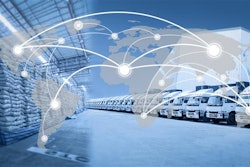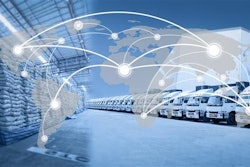
Every year, around $2 trillion is lost in the industry, and a large portion of that figure is supply loss due to excess inventory, low fill rates and issues of getting the right SKUs to the right place at the right time. Supply chain across the world were taken by surprise when the Coronavirus disease (COVID-19) hit, as the number of issues overwhelmed humans and systems alike, further compounding out-of-stock situations at point of sale.
Supply chain planners are ready to embrace better tools to reduce the number of clerical tasks they perform so they can spend their time on high-value work that requires human intelligence. A new category of software, called flow operations (FlowOps), brings both machine and human intelligence together to manage supply chains more efficiently. Artificial intelligence (AI) is at the center of this category and breakthroughs in technology now allow products to predict disruptions that might interrupt flow and suggest actions to resolve situations before they occur.
FlowOps is now possible because of the convergence of technology breakthroughs in high-performance computing, data storage and machine intelligence. Today, computers are a million times faster than when enterprise resource planning (ERP) and manufacturing execution systems (MES) originated 50 years ago.
What sparked FlowOps? Operations Entropy. Entropy is a tumble into disorder and a fog that planners cannot see through. Operations entropy and the resulting waste are hurting customers, the bottom line, teams and the planet leading to production problems and enormous waste. Defective and obsolete products get tossed, trucks drive empty, unplanned downtime eats margins, supply doesn’t accurately meet demand and so on.
Now, there’s a way you can master an entirely new level of performance. You can see supply-demand imbalances and ship products before unfilled orders translate to lost revenue. You can see demand-side predictions and adjust production accordingly before you have excess inventory eating profits.
There are three key components of creating a supply chain system that follows FlowOps --product flow, cash flow and team flow. Product flow gets the right products in the right locations with predictive signals to make the best execution-horizon allocation and expedite decisions. Cash flow drives revenue by improving fill rate and reduces costs associated with inventory and expedites. Team flow centers planners around clear value-at-risk so teams feel less overwhelmed, more productive and more valuable.
Each of the aforementioned components look for patterns in a company’s operations, predict possible scenarios, continuously learn and make recommendations that improve the seamless flow of goods from raw materials to factories to shelf. This synchronization can ultimately make industrial waste all but extinct.
Companies can now use advanced machine intelligence to help users eliminate waste in factories and supply chains, restore frictionless flow of goods from raw materials to consumer. For the first time, technology exists that allows companies to understand destructive hidden operational patterns, predict outcomes that create waste and calculate optimized actions to prevent waste before it happens.
Complex AI systems in this category find, predict and solve near-term risks that are invisible to other categories of ERP and concurrent planning systems. To take your supply chain to the next level, use AI to unleash the value of data currently trapped in silos and delivers previously unthinkable levels of performance.



















![Pros To Know 2026 [color]](https://img.sdcexec.com/mindful/acbm/workspaces/default/uploads/2025/08/prostoknow-2026-color.mduFvhpgMk.png?ar=16%3A9&auto=format%2Ccompress&bg=fff&fill-color=fff&fit=fill&h=135&q=70&w=240)